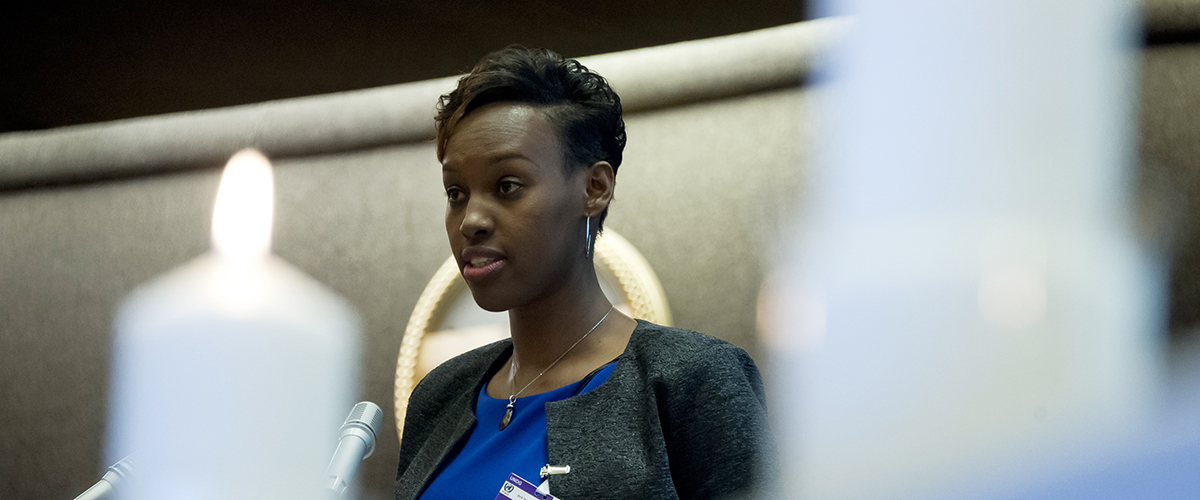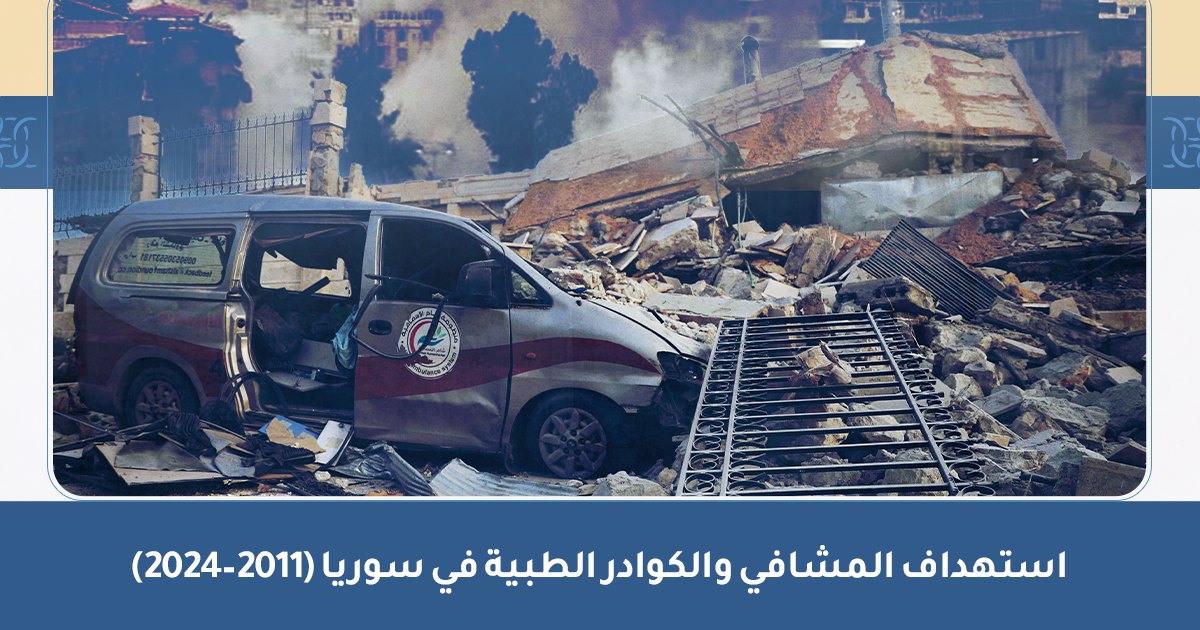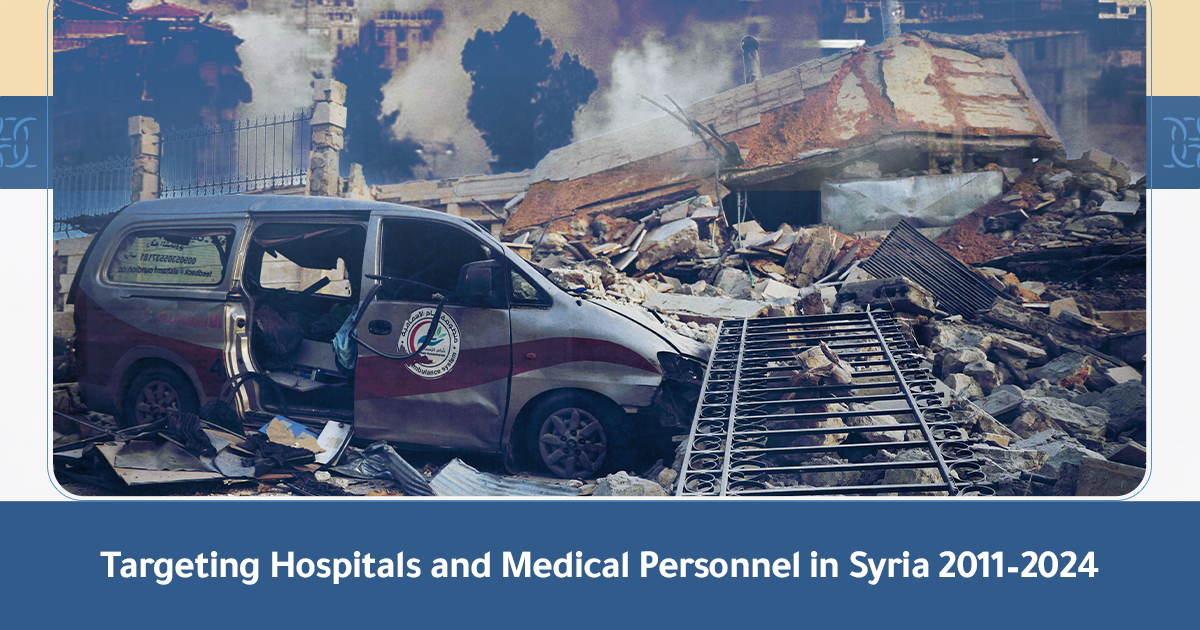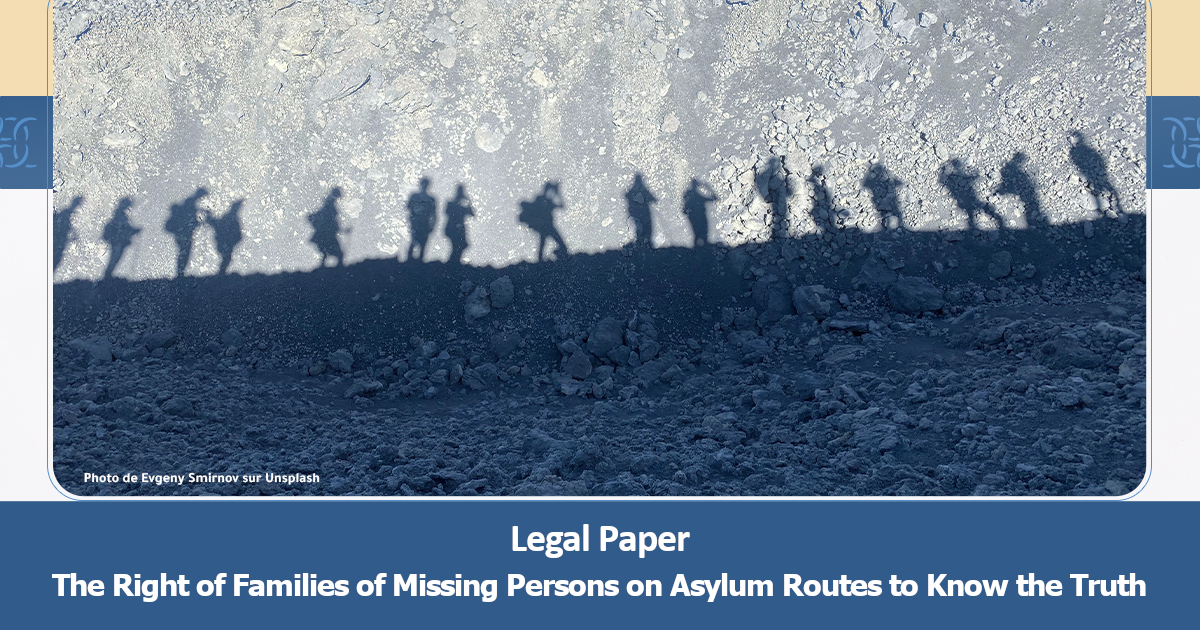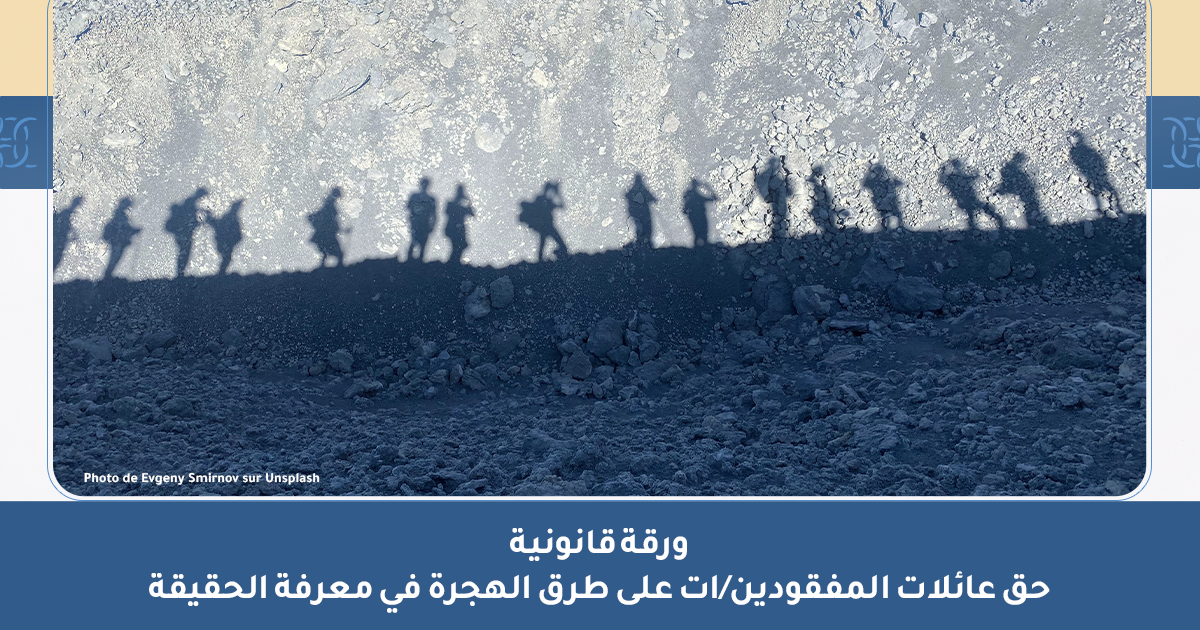Justine Mudahogora, survivor of the 1994 Genocide in Rwanda among lit candles at the 2017 observance in Geneva of the International Day of Reflection on the 1994 Genocide in Rwanda. UN Photo/Jean-Marc Ferré
In September 2015, the United Nations General Assembly established 9 December as the International Day of Commemoration and Dignity of the Victims of the Crime of Genocide and of the Prevention of this Crime. The 9th of December is the anniversary of the adoption of the 1948 Convention on the Prevention and Punishment of the Crime of Genocide (the “Genocide Convention”).
The purpose of the day is to raise awareness of the Genocide Convention and its role in combating and preventing the crime of genocide, as defined in the Convention, and to commemorate and honour its victims.
In adopting the resolution, without a vote, the 193-member Assembly reiterated the responsibility of each individual State to protect its populations from genocide, which entails the prevention of such a crime, including incitement to it.
A Muslim man grieving over his son’s grave in Vitez, Bosnia and Herzegovina in May 1994. UN Photo/John Isaac
Background
The Genocide Convention (article 2) defines genocide as “any of the following acts committed with intent to destroy, in whole or in part, a national, ethnical, racial or religious group … “, including:
- Killing members of the group;
- Causing serious bodily or mental harm to members of the group;
- Deliberately inflicting on the group conditions of life calculated to bring about its physical destruction in whole or in part;
- Imposing measures intended to prevent births within the group;
- Forcibly transferring children of the group to another group.
The Convention confirms that genocide, whether committed in time of peace or war, is a crime under international law which parties to the Convention undertake “to prevent and to punish” (article 1). The primary responsibility to prevent and stop genocide lies with the State.
Prevention of Genocide:
To prevent genocide and genocidal conflicts, it is critically important to understand their root causes. While conflict has many causes, genocidal conflict is identity-based. Genocide and related atrocities tend to occur in societies with diverse national, racial, ethnic or religious groups that are locked in identity-related conflicts. It is not simply differences in identity, whether real or perceived, that generate conflict, but the implication of those differences in terms of access to power and wealth, services and resources, employment, development opportunities, citizenship and the enjoyment of fundamental rights and freedoms. These conflicts are fomented by discrimination, hate speech inciting violence and other violations of human rights.
In terms of prevention, the critical step is to identify the factors (discriminatory practices) in a given situation that lead to or account for acute disparities in the treatment of a diverse population, and to seek ways to diminish and eventually eradicate these possible causes of genocidal violence. Given that no country is perfectly homogeneous, genocide is a truly global challenge.
Responsibility to Protect:
At the 2005 World Summit, Member States committed to protect their populations from genocide, war crimes, ethnic cleansing and crimes against humanity, as well as their incitement. They agreed that when States require assistance to fulfil that responsibility, the international community must be ready to assist them and, when States manifestly fail to protect their populations from those crimes, the international community must be ready to take action, collectively, in accordance with the United Nations Charter. Intervention only happens when prevention fails. Therefore, prevention is the basis of the principle of the responsibility to protect.
These three pillars of the responsibility to protect are articulated in the Outcome Document of the World Summit (A/RES/60/1, para. 138-140) and formulated in the Secretary-General’s 2009 Report (A/63/677) on Implementing the Responsibility to Protect. The political commitment made by Member States in 2005 is deeply rooted in international law, including the Genocide Convention.
The Special Advisers on the Prevention of Genocide and the Responsibility to Protect:
The Special Advisers on the Prevention of Genocide and on the Responsibility to Protect work together to advance national and international efforts to protect populations from genocide, war crimes, ethnic cleansing and crimes against humanity, including their incitement. One of their main tasks is to collect information on situations where there may be a risk of genocide, war crimes, ethnic cleansing and crimes against humanity, based on the risk factors outlined in the Framework of Analysis for Atrocity Crimes. Due to the sensitive nature of their mandate, much of the Office’s work remains outside of the public eye. However, when the Special Advisers assess that making their concerns public will reduce the risk of atrocity crimes in a specific situation, they do so by issuing public statements and, upon request, by briefing the Security Council.
Ratification of the Genocide Convention in October 1950. UN Photo/Marvin Bolotsky
Resources
Documents
- Resolution establishing the International Day of Commemoration and Dignity of the Victims of the Crime of Genocide and of the Prevention of this Crime (A/RES/69/323)
- Convention on the Prevention and Punishment of the Crime of Genocide (A/RES/3/260)
- States Parties to the Convention on the Prevention and Punishment of the Crime of Genocide
- Human Rights Council resolution 34/24 on the prevention of genocide (23 March 2015)
- UN resolutions on genocide
- 2005 World Summit Outcome Document
Other resources
- Office of the Special Advisers on the Prevention of Genocide and the Responsibility to Protect
- News Story: UN marks first International Day to commemorate victims of genocide; the ‘crime of crimes’
- Remarks by the United Nations Special Adviser on the Prevention of Genocide on the International Day of Commemoration and Dignity of the Victims of the Crime of Genocide and of the Prevention of this Crime
- Press Release: United Nations Special Adviser on the Prevention of Genocide marks the first observance of the International Day of Commemoration and Dignity of the Victims of the Crime of Genocide and of the Prevention of this Crime
- News Story: UN official welcomes proclamation of International Day to honour victims of genocide
- Press Release: United Nations Special Adviser on the Prevention of Genocide welcomes the adoption of the International Day of Commemoration and Dignity of the Victims of the Crime of Genocide and of the Prevention of this Crime (14 September 2015)
- Framework of Analysis for Atrocity Crimes
- Outreach Programme on the Rwanda Genocide and the United Nations
- The Holocaust and the United Nations Outreach Programme
Source: UN events
